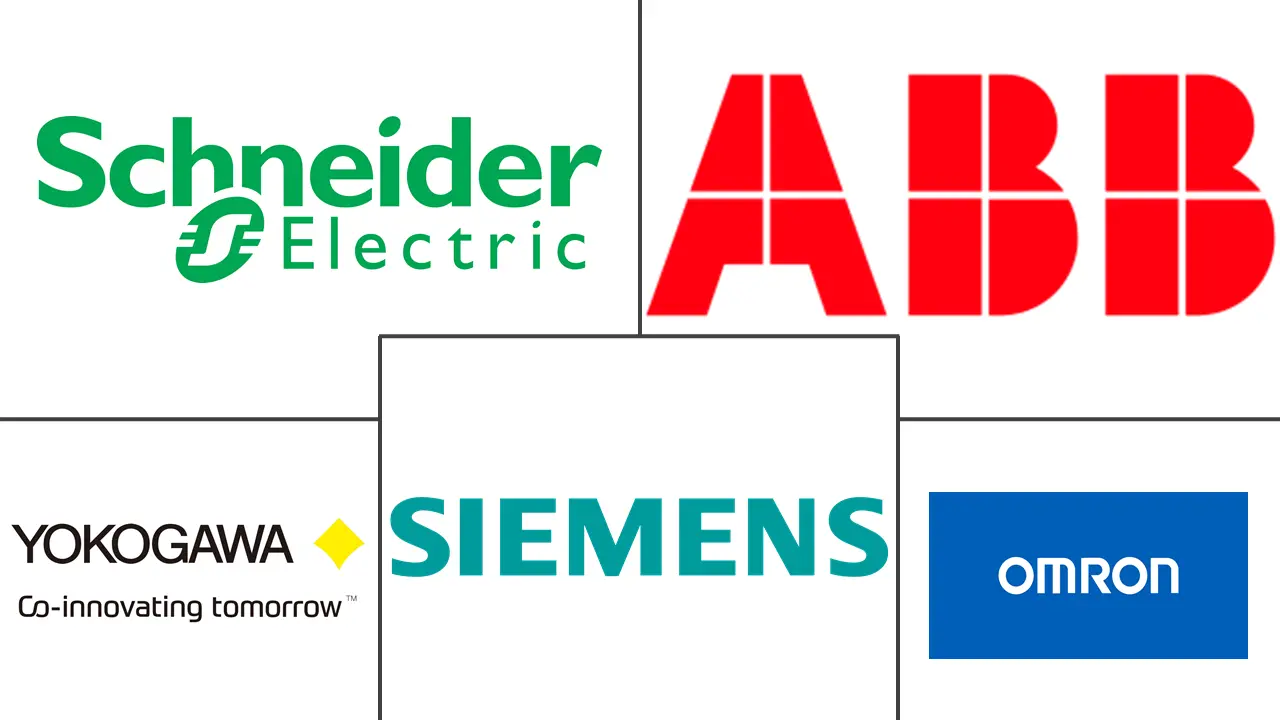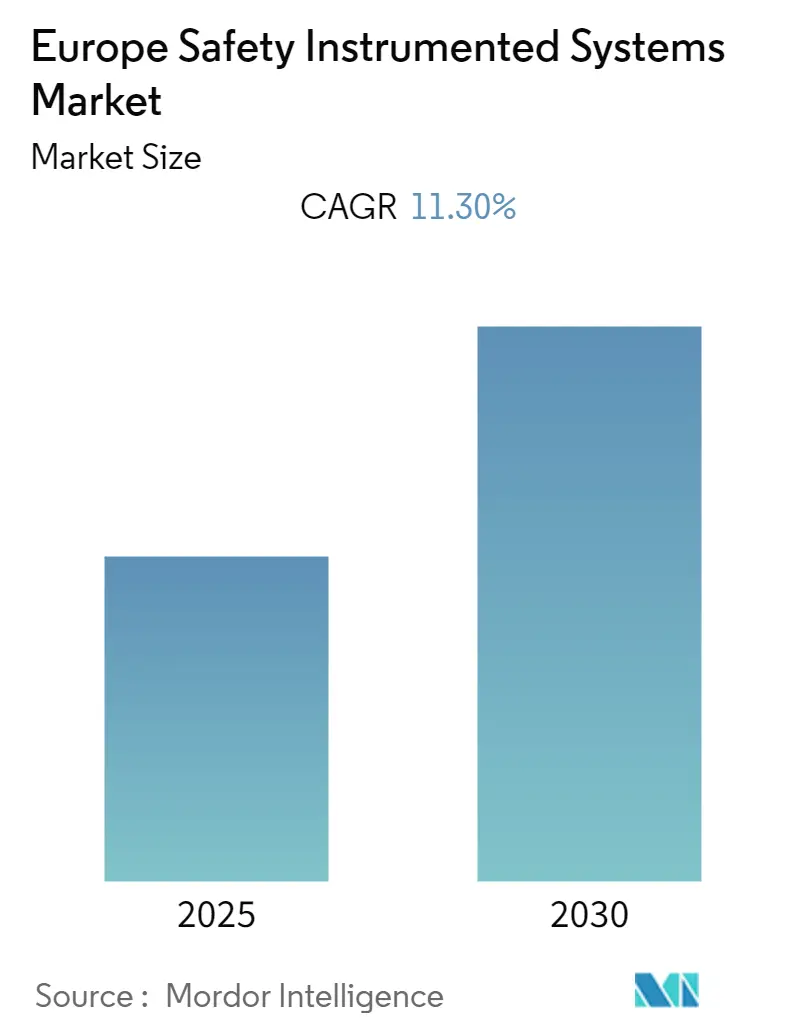
Europe Safety Instrumented Systems Market Analysis
The Europe Safety Instrumented Systems Market is expected to register a CAGR of 11.3% during the forecast period.
- Germany is the most significant manufacturing hub in the European Union. According to official data from the World Bank and projections from Trading Economics, Germany's GDP value represents 3.33% of the world economy, following free-market principles, with a considerable degree of government regulation and wide-ranging social welfare programs.
- According to WEF, Germany is one of the world's best locations in planning and operational security. Multiple government regulations and policies require significant precautionary measures to be taken before the release of finished products in multiple end-user industries. In accordance with the existing policies and framework present in the automotive and construction sectors, the scope for safety instrumented systems is increasing day by day.
- In April 2020, Neptune Energy announced two important hydrocarbon discoveries had been made in Northwestern Germany. According to the company, a processing plant for natural gas was being constructed during H1 2020, with production expected to start toward the end of the year. Such instances are likely to boost the demand for SIS equipment, as they are to safeguard the plants.
- Inspection and maintenance of safety-critical lifting equipment are essential for safe and efficient onshore and offshore operations. In April 2020, Sparrows Group achieved the United Kingdom Accreditation Service (UKAS) accreditation. The UKAS is the sole national accreditation body of the United Kingdom appointed by the UK government. It assesses organizations that provide certification, testing, inspection, and calibration services against internationally agreed standards.
- The global outbreak of COVID-19 has significantly impacted the growth of various industries like the automotive sector, owing to a large number of machinery and workforce involved. For instance, the European region's demand for cars declined significantly as it is susceptible to economic conditions and economic prospects. According to the European Automobile Manufacturers' Association, car sales in the European Union fell by 25% in 2020 compared to the previous year. This restrains the growth of the studied market.
Europe Safety Instrumented Systems Market Trends
The Emergency Shutdown Systems are Expected to Hold a Major Market Share
- Emergency Shutdown System (ESD) is an automatic protection system that activates to shut down the plant or process stations if it enters a potentially dangerous state. ESD is part of the Safety Instrumented System (SIS) which is primarily used for safety purposes to protect either plants or people. These systems are designed to minimize the consequences of emergency situations, such as damage to equipment, injury, or loss of lives of the workers, by protecting against things like fire outbreaks, explosions, and leaks of hydrocarbons and other hazardous gases.
- For high-risk industries like Nuclear Power, Oil, and Gas, Chemical Industries, or other Environments with explosion risk, specialized, highly reliable Emergency Shutdown (ESD) System play a crucial role in cases the process goes beyond the control margins. To ensure reliability, the Emergency Shutdown systems usually have their own logic controller so that they can react to failures much faster than a normal PLC system which can be crucial in emergency cases.
- Owing to increasingly complex manufacturing and industrial applications, there has been a rise in the number of global catastrophic accidents. This, along with the supporting government regulations which promote the adoption of advanced technologies to ensure workers' safety, is supporting the growth of safety systems such as ESD.
- Emergency shutdown systems make use of several sensors and switches installed at functionally important locations to continuously monitor the working of the processes of an industrial system. These systems can usually be found on gas and steam turbines in power plants, oilfields, oil and gas processing plants, and boilers. To fulfill the growing demand for safety systems majority of vendors operating in the market are offering ESD systems in the standalone format as well as a part of SIS.
- For instance, System 800xA is ABB's main control system offering in which 800xA High Integrity constitutes the Safety Instrumented Systems (SIS) portion. The ESD safety system can be fully integrated with the System 800xA Basic Process Control System (BPCS), thereby providing a common operational, engineering, and information environment for BPCS and SIS.
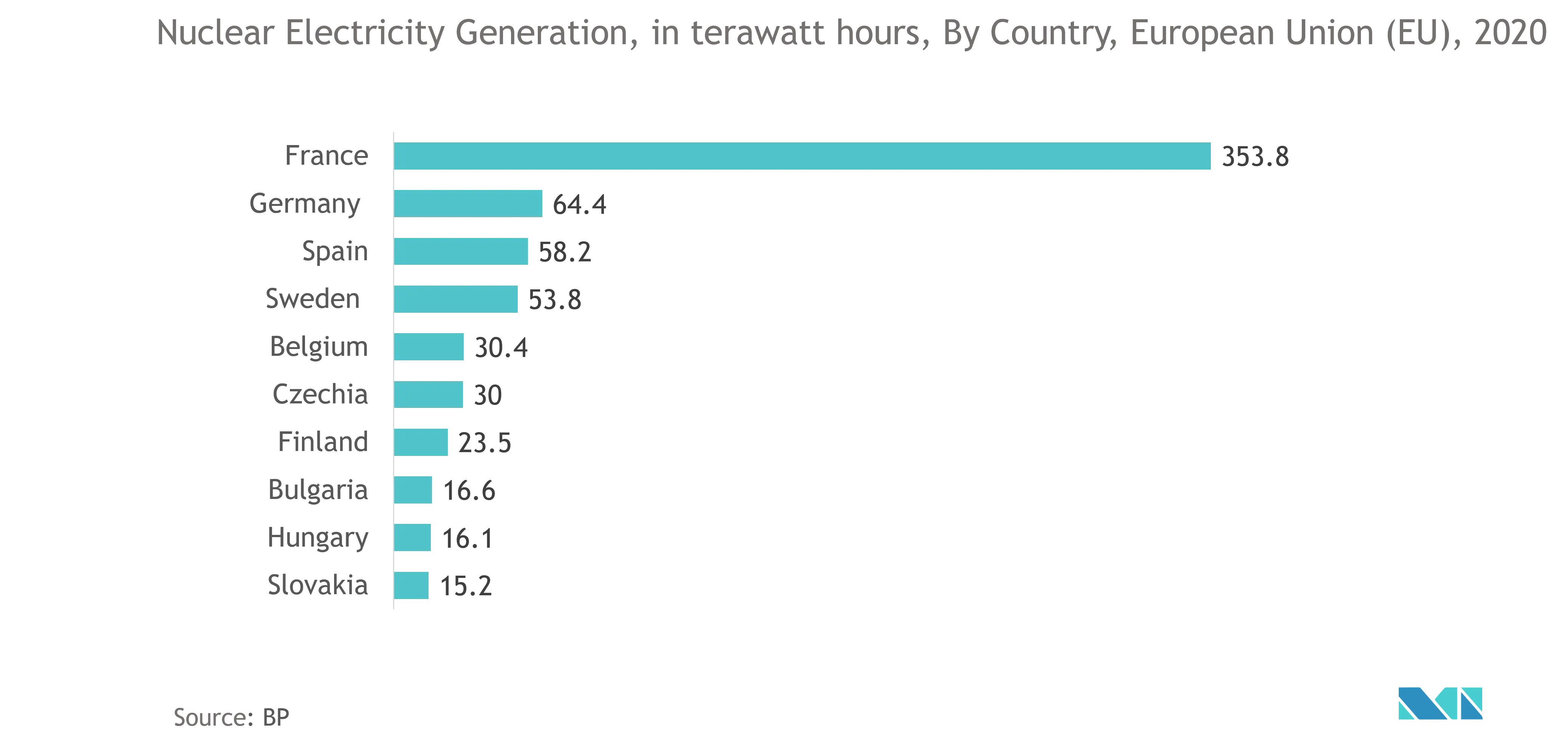
Chemicals and Petrochemicals Segment is Expected to Drive the Market Growth
- A Safety Instrumented System is encompassed of sensors, logic solvers, and final control elements for the single purpose of taking the process to a safe state when predetermined conditions are violated. The growing benefits of safety instrumented systems over traditional safety systems are fueling the market demand. The chemicals & petrochemicals industries are identified as continuously developing industries, wherein the need for expansion and upgrading of aging safety problems and infrastructures is essential. Traditional safety systems are deployed through an electrical control system and are hardwired, which could perhaps lead to potential accidents affecting people, assets, and the environment.
- This will surge the demand for safety instrumented systems which deliver several advantages such as prolonged field life, reduction in unplanned downtime, reduction in annual maintenance cost, and elimination of unexpected repair expenses, and adhering to current codes and standards. Thus, the increasing advantages of safety instrumented systems over traditional safety systems will drive industry growth.
- In order to minimize various risks, process control systems are mounted to maintain a safe operation of the plant, supported by a robust alarm detection and reporting system, and operated by qualified, trained personnel. Regardless of the types of risks, the safety instrumentation systems, alarms, and operator intervention, provide the first layers of protection for the process.
- In the process design, care is taken to specify lines, equipment, and valves with the appropriate sizes, materials of construction, and appropriate accessories. The basic safety instrumentation system is installed with suitable instruments, controls, and monitoring logic to enable the plant to be operated within the safest ranges for pressure, temperature, and flow rate. Alarms are configured to allow the operators to respond to abnormal conditions and take corrective actions before a risk becomes an accident.
- In order to mitigate risks like the ones above, OSHA, The Occupational Safety and Health Administration, and several companies in the chemical industry, along with ISA and other professional groups, embraced the idea of defining risks, not as isolated processing line or tank risks, but as risks associated with processing functions as a whole. Standards ISA 84 and IEC 61508 were developed around the concept of functional safety. Later, these standards, ISA in the US and IEC in Europe, were harmonized in a single standard, ISA-84/IEC-61511. In March 2021, BASF’s Ludwigshafen, Germany, site have introduced a new production facility with the capacity to produce 90,000 mt/y of acetylene. BASF has opted for safety technology from HIMA, Brühl, Germany, which consists of hardware, software, and engineering to protect and secure safety-critical production processes in the complex project.
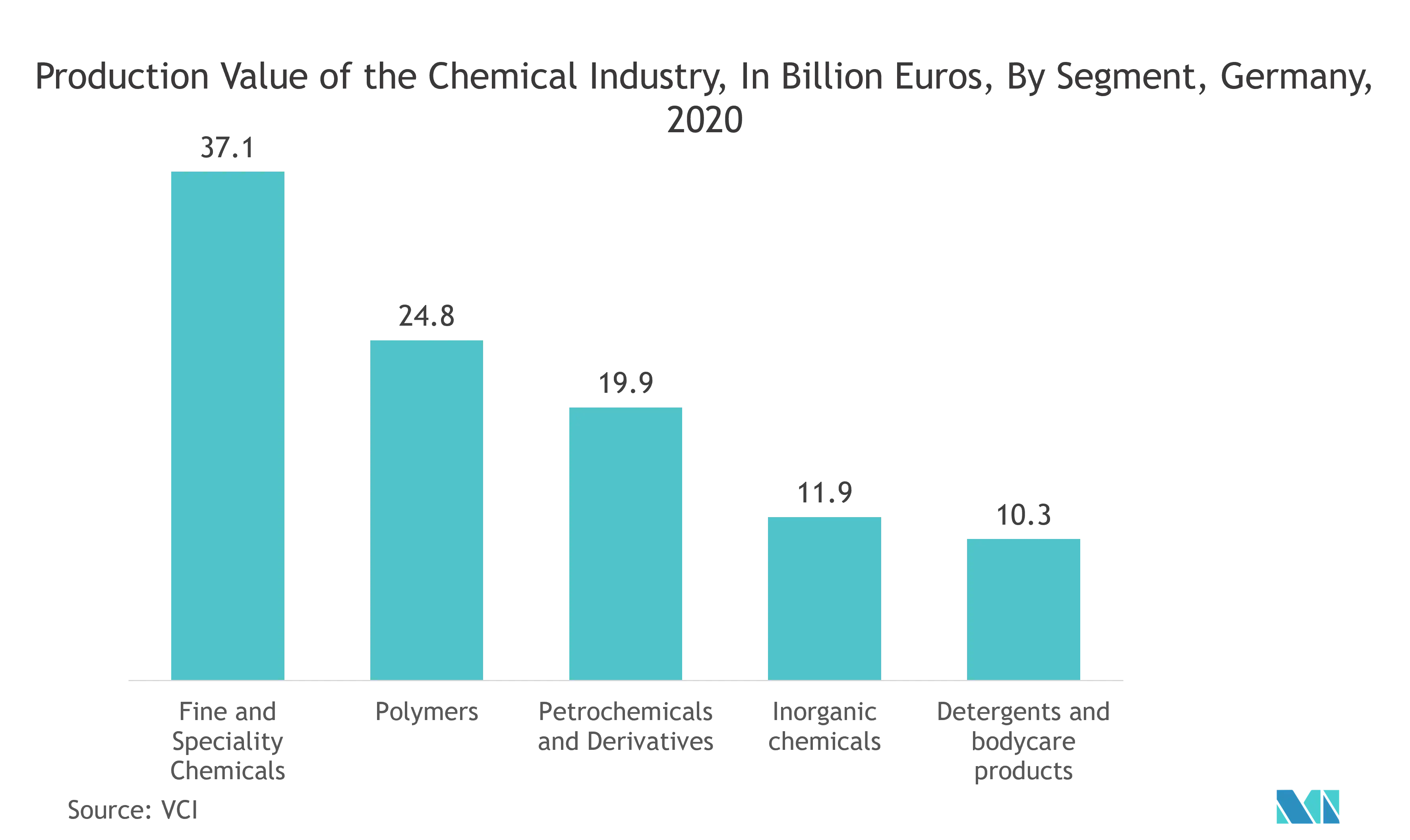
Europe Safety Instrumented Systems Industry Overview
The Europe Safety Instrumented Systems Market is moderately competitive with several major players like Siemens AG, ABB Ltd., Schneider Electric SE, etc. In terms of market share, few significant players currently dominate the market. With a prominent share in the market, these major players are focusing on expanding their customer base across foreign countries. These companies are leveraging strategic collaborative initiatives to increase their market share and profitability. The competition, rapid technological advancements, and frequent changes in consumer preferences are expected to threaten the market's growth of the companies during the forecast period.
- January 2021 - ABB Ltd. Launched ABB Ability Safety Plus for hoists, the first fully SIL 3 certified mine hoist solutions with the highest level of safety. It includes include Safety Plus Hoist Monitor (SPHM), Safety Plus Hoist Protector (SPHP), and Safety Plus Brake System (SPBS), including Safety Brake Hydraulics (SBH). It has been designed in accordance with the international 'safety of machinery' standard IEC62061.
- November 2020 - Siemens Mobility and Deutsche Bahn started developing hydrogen-powered fuel cell trains and a filling station which will be trialed in 2024 with a view to replacing diesel engines on German local rail networks.
Europe Safety Instrumented Systems Market Leaders
-
Siemens AG
-
ABB Ltd
-
Schneider Electric SE
-
Yokogawa Electric Corporation
-
OMRON Corporation
- *Disclaimer: Major Players sorted in no particular order
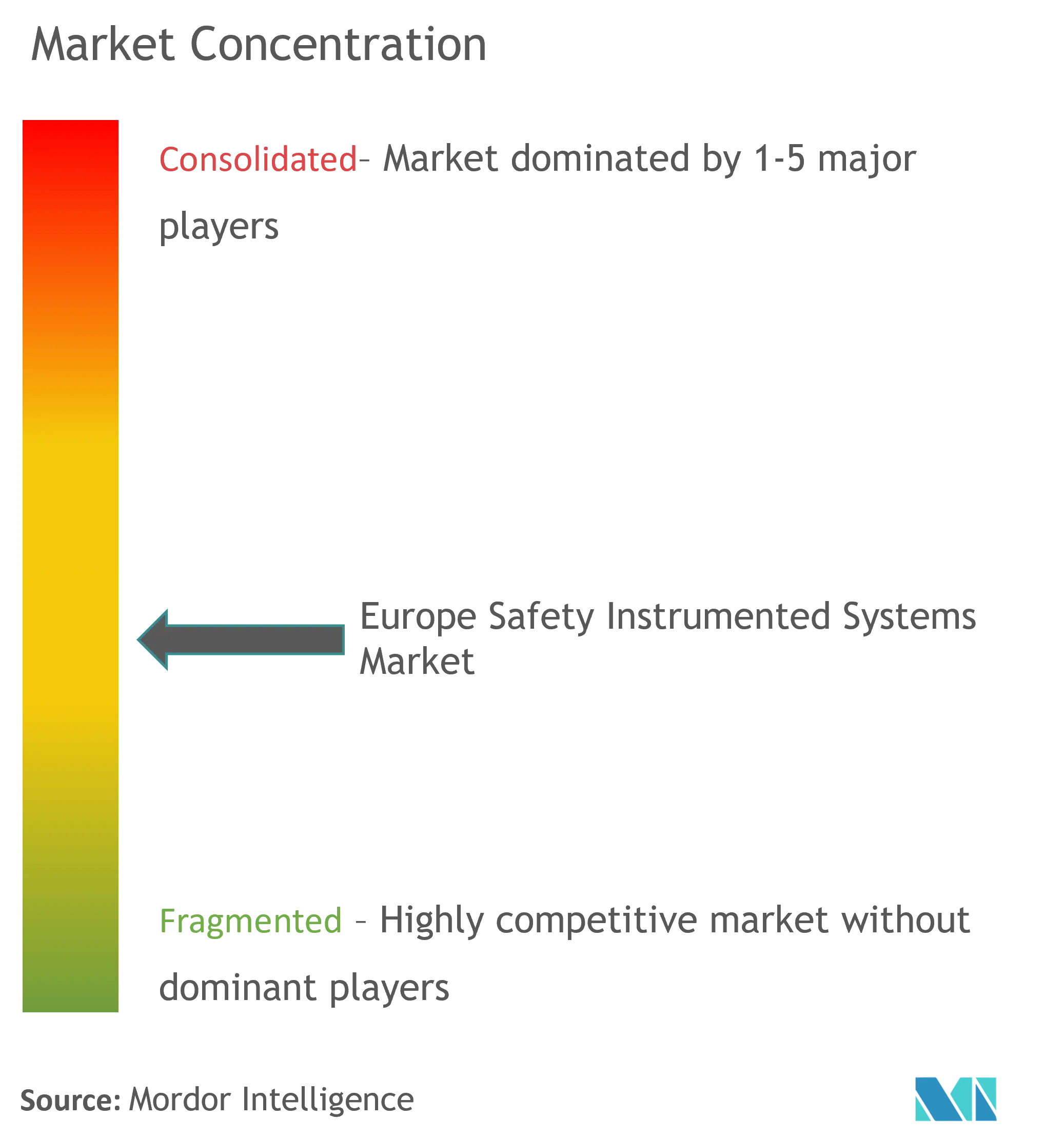
Europe Safety Instrumented Systems Market News
- February 2021 - Yokogawa Electric Corporation announced the addition of new turbidity detectors, chlorine sensor units, and liquid analyzers lineup in its product portfolio for water treatment facilities.
- November 2020 - Siemens Energy partnered with Houston-based ProFlex Technologies to provide spontaneous leak detection services for pipeline operators. As part of the agreement, Siemens Energy gains exclusive access to ProFlex Technologies' digital Pipe-Safe advanced leak detection technology. The technology, combined with Siemens Energy's Internet of Things (IoT) system, will enable operators to reduce the environmental risk associated with operating their infrastructure by minimizing unplanned releases of products into the ecosystem.
Europe Safety Instrumented Systems Industry Segmentation
The Safety Instrumented Systems (SIS) are responsible for ensuring operating safety and an emergency stop within safe limits whenever an operation exceeds such limits. The primary objective is to prevent accidents inside and outside plants, such as fires, explosions, equipment damage, production and property protection, life danger or personal health damages, and catastrophic impact on a community. For several years, safety systems were designed per German standards (DIN V VDE 0801 and DIN V 19250), which had been well received by the global safety community for years and prompted efforts to create a global standard, IEC 61508, which now serves as a foundation for all operational safety regarding electric, electronic, and programmable devices in any industry.
The Europe Safety Instrumented Systems Market is Segmented By Components (Sensors, Switches, Programmable Devices, Actuators, and Valves), Application (Emergency Shutdown Systems (ESD), Fire and Gas Monitoring and Control (F&GC), High Integrity Pressure Protection Systems (HIPPS), Burner Management Systems (BMS), Turbo Machinery Control), End-User (Chemicals and Petrochemicals, Power Generation, Pharmaceutical, Food and Beverage, Oil and Gas), and Country.
| By Components | Sensors |
| Switches | |
| Programable Devices | |
| Actuators and Valves | |
| By Application | Emergency Shutdown Systems (ESD) |
| Fire and Gas Monitoring and Control (F&GC) | |
| High Integrity Pressure Protection Systems (HIPPS) | |
| Burner Management Systems (BMS) | |
| Turbo Machinery Control | |
| By End-User | Chemicals and Petrochemicals |
| Power Generation | |
| Pharmaceutical | |
| Food and Beverage | |
| Oil and Gas | |
| By Country | United Kingdom |
| Germany | |
| France | |
| Rest of Europe |
Europe Safety Instrumented Systems Market Research FAQs
What is the current Europe Safety Instrumented Systems Market size?
The Europe Safety Instrumented Systems Market is projected to register a CAGR of 11.3% during the forecast period (2025-2030)
Who are the key players in Europe Safety Instrumented Systems Market?
Siemens AG, ABB Ltd, Schneider Electric SE, Yokogawa Electric Corporation and OMRON Corporation are the major companies operating in the Europe Safety Instrumented Systems Market.
What years does this Europe Safety Instrumented Systems Market cover?
The report covers the Europe Safety Instrumented Systems Market historical market size for years: 2019, 2020, 2021, 2022, 2023 and 2024. The report also forecasts the Europe Safety Instrumented Systems Market size for years: 2025, 2026, 2027, 2028, 2029 and 2030.
Our Best Selling Reports
Europe Safety Instrumented Systems Industry Report
Statistics for the 2025 Europe Safety Instrumented Systems market share, size and revenue growth rate, created by Mordor Intelligence™ Industry Reports. Europe Safety Instrumented Systems analysis includes a market forecast outlook for 2025 to 2030 and historical overview. Get a sample of this industry analysis as a free report PDF download.

